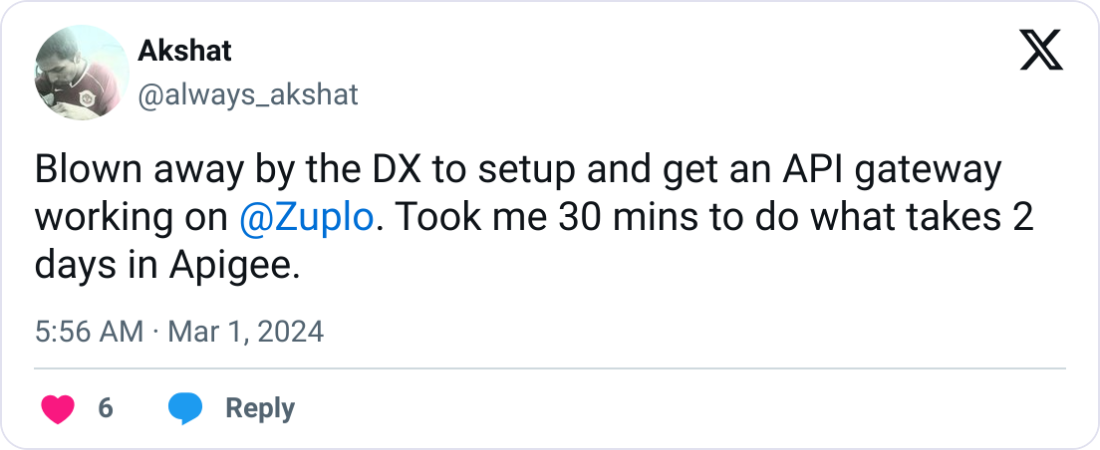APIs power everything from your mobile apps to smart devices, serving as the invisible connective tissue of our digital world. But this ubiquity comes with a serious security challenge: automated bots and malicious actors are increasingly targeting these crucial interfaces as their primary attack vector.
The stakes couldn't be higher—insecure APIs and bot attacks caused global losses of $186 billion in 2023 alone, with 44% of all Account Takeover attacks specifically targeting APIs. When your API endpoints aren't properly secured, it's not just data at risk—it's your customer trust, market reputation, and ultimately your business survival. With effective security practices, you can create protection layers that keep threats at bay while ensuring seamless performance for legitimate users. Let's dive into the strategies that transform vulnerable APIs into resilient digital fortresses.
- Danger in the Digital Wild: Understanding the API Threat Landscape
- Your First Line of Defense: Authentication and Authorization
- Throttling the Flood: Rate Limiting and Traffic Management
- Outsmarting the Machines: Bot Detection and Mitigation
- Fortifying the Gates: Advanced Protection Mechanisms
- Watching the Walls: Monitoring and Response
- Security Without Sacrifice: Balancing Protection and Performance
- Playing by the Rules: Regulatory Compliance and API Security
- Starting Your Journey: Implementation Roadmap
- Staying Ahead of Threats: Future-Proofing Your API Security
- Securing Tomorrow: Your API Protection Journey Begins Now
Danger in the Digital Wild: Understanding the API Threat Landscape#
Before building defenses, you need to know what you're up against. Modern attackers employ sophisticated techniques that evolve constantly, requiring equally sophisticated protection strategies.
Credential Stuffing and Account Takeover#
Think of credential stuffing as throwing spaghetti at the wall to see what sticks. Attackers use bots to test thousands of stolen username/password combinations against your API login endpoints. In 2023, 44% of all Account Takeover attacks zeroed in on APIs, according to HackerNoon. These attacks work because APIs often handle user verification—the keys to your digital kingdom.
DDoS/DoS Attacks#
Imagine thousands of people trying to squeeze through a single door at once—that's a DDoS attack. Attackers use botnets to flood your API endpoints with traffic until they buckle under pressure. When your API goes down, so does your business.
Business Logic Exploitation#
These attacks are particularly sneaky because they look like normal requests. Instead of breaking down the door, attackers walk right through by finding flaws in your application's rules. They might bypass payment systems or abuse promotional offers, exploiting the way your API processes business transactions.
Data Scraping Operations#
Data scrapers are digital vacuum cleaners, sucking up everything from your pricing information to customer data. According to Traceable AI, modern scrapers have become increasingly sophisticated, often mimicking legitimate user behavior to avoid detection.
Vulnerability Scanning#
Before breaking in, attackers case the joint. They use automated tools to probe your APIs for weaknesses—looking for undocumented endpoints or security gaps that they can exploit later.
The 2023 MOVEit Transfer attack demonstrates the potential damage. Attackers exploited a SQL injection vulnerability in an API endpoint, affecting countless organizations using the service. According to the Pynt API Security Guide, this single vulnerability led to widespread data exposure across multiple industries.
Your First Line of Defense: Authentication and Authorization#

Authentication and authorization form the foundation of your API security strategy. By simply employing effective API authentication methods, you already eliminate a significant number of potential attacks.
OAuth 2.0 and OpenID Connect#
These protocols aren't just industry standards—they're your best friends for secure access management. OAuth 2.0 handles what users can do, while OpenID Connect verifies who they actually are. Companies like Salesforce use OAuth 2.0 to control user access across their systems because it flat-out works.
API Keys#
Simple but effective identity tokens when implemented correctly. Create scoped API keys that limit access to specific resources—think specialized keys rather than master keys that open everything. And pair them with other authentication methods for protecting valuable assets.
JSON Web Tokens (JWTs)#
JWTs aren't just tokens—they're self-contained security powerhouses perfect for distributed systems. Set proper expiration times, verify signatures religiously, and never trust the payload without validation.
Multi-Factor Authentication (MFA)#
For your crown jewels, add MFA. Even if someone steals credentials, they'll need that second factor to get in. It's like having a lock and an alarm system—why settle for just one when attackers certainly won't?
Throttling the Flood: Rate Limiting and Traffic Management#
Rate limiting doesn't just stop abuse—it keeps your API running smoothly when everyone else's is melting down. Implementing the right API rate limiting best practices ensures smart traffic control that separates legitimate users from attackers.
Fixed Window vs. Sliding Window#
Fixed window counting resets at specific intervals, while sliding window tracking provides smoother control. Sliding windows generally work better against traffic spikes that might hit right when your counters reset—providing more nuanced protection than simple on/off mechanisms. Implementing dynamic rate limiting can adapt to varying traffic patterns more effectively.
Endpoint-Specific Configuration#
Not all endpoints need the same protection. Set stricter limits on sensitive operations and more relaxed limits on public information. This resource-based approach keeps critical functions running even under heavy load.
Throttling Responses#
Instead of slamming the door shut, throttling slows down excessive requests. This way, real users still get through during traffic surges, just a bit slower. Properly managing request limits helps ensure that legitimate users experience minimal disruption even during heavy traffic. It's the difference between saying "no" and "please wait"—and your legitimate users will thank you for it.
Outsmarting the Machines: Bot Detection and Mitigation#
Sophisticated bots increasingly mimic human behavior, making them harder to detect. You need multiple detection methods working together.
Behavioral Analysis#
Watch how users interact with your system. Bots often give themselves away with unnatural patterns—perfectly consistent mouse movements, inhuman typing speed, or navigating too quickly through your app.
Challenge-Response Systems#
When something seems fishy, throw up a CAPTCHA or similar challenge. Modern systems use progressive challenges—easy ones for low-risk activities and tougher verification for suspicious behaviors, adding friction exactly where needed.

Over 10,000 developers trust Zuplo to secure, document, and monetize their APIs
Learn MoreDevice Fingerprinting#
Create unique IDs based on device characteristics and browser configurations. Sudden changes can flag bot activity. Just make sure you're respectful of privacy by focusing on technical identifiers, not personal data.
Machine Learning Approaches#
Advanced protection uses semi-supervised learning to spot abnormal patterns. These systems learn continuously, adapting to new threats as they emerge—security that gets smarter every day.
Fortifying the Gates: Advanced Protection Mechanisms#
For mature organizations facing sophisticated threats, these advanced techniques provide additional layers of defense.
Web Application Firewalls (WAFs)#
A WAF inspects every request before it reaches your API, analyzing HTTP traffic patterns to block malicious activity. For maximum protection:
- Configure API-specific rule sets instead of generic web-focused rules
- Develop custom rules that understand your unique business logic
- Implement anomaly detection to catch zero-day exploits
API Gateways#
Think of API gateways as specialized bouncers for your API ecosystem. They provide:
- Centralized traffic management and control
- Request/response transformation and sanitization
- Comprehensive logging for visibility
- Consistent authentication enforcement
A global banking institution protected their microservices by centralizing authentication through their gateway, significantly reducing their attack surface while maintaining performance.
Encryption and Data Protection#
Even with strong perimeter defenses, encryption is your last line of protection for sensitive data:
- Use TLS 1.2 or higher with proper cipher configurations
- Implement automated certificate rotation and monitoring
- Consider certificate pinning in mobile apps
- Apply field-level encryption for especially sensitive information
For accessible but protected data, consider partial masking, tokenization, or format-preserving encryption techniques.
Watching the Walls: Monitoring and Response#

Building defenses isn't enough—you need eyes watching for intruders and a response team ready to act when attacks occur.
Real-time Monitoring#
Good detection requires constant vigilance. Monitor:
- Traffic patterns for sudden spikes indicating attacks
- Authentication failures that might signal brute force attempts
- Geographic anomalies like logins from unexpected locations
- Response times and error rates that could indicate probing
When setting alert thresholds, find the right balance between sensitivity and alert fatigue using tiered alerting with different severity levels.
Incident Response#
When attacks happen, having a plan makes all the difference:
- Create a threat classification framework to trigger appropriate playbooks
- Develop step-by-step response procedures for each threat type
- Configure automated responses like IP blocking and request throttling
- Conduct thorough post-mortems to improve future defenses
Security Without Sacrifice: Balancing Protection and Performance#
You don't have to choose between security and speed. With smart implementation, you can have both strong security and great performance.
Implementing Smart Caching Strategies#
- Use token-based caching to provide fast responses for authorized users
- Implement partial caching for non-sensitive content
- Set cache expiration times based on data sensitivity
- Protect cached data with appropriate encryption
Security at Different Architectural Layers#
Distribute security responsibilities across your architecture:
- Stop DDoS attacks at your CDN or edge network
- Handle authentication and rate limiting at the gateway
- Focus on authorization and business logic at the application layer
- Manage encryption and access controls at the data layer
Playing by the Rules: Regulatory Compliance and API Security#
API security isn't just about stopping attackers—it's also about meeting legal requirements for data protection. Establishing robust security policies is essential to ensure compliance with these regulations.
GDPR Compliance for APIs#
For EU residents' data, implement:
- Privacy by design principles in your API architecture
- Data minimization by exposing only necessary information
- Mechanisms for user rights like access and deletion
- Comprehensive logging of all personal data processing
PCI DSS Requirements#
For payment card data:
- Implement strong access controls with proper authentication
- Ensure end-to-end encryption for all sensitive information
- Conduct regular security testing of payment-related endpoints
- Maintain detailed audit trails of all access to payment data
HIPAA and Healthcare APIs#
For protected health information:
- Use multi-factor authentication and robust access controls
- Encrypt health data both in transit and at rest
- Keep detailed access logs of who accessed what information
- Establish proper business associate agreements with third parties
Document all security measures thoroughly. When auditors come knocking, these records will demonstrate your compliance efforts.
Starting Your Journey: Implementation Roadmap#
Not all organizations have the same resources. Here's how to make progress based on your current capabilities.
For Small to Medium Businesses#
Working with limited resources? Focus your efforts where they matter most:
- Start with basic authentication and HTTPS encryption for all endpoints
- Leverage cloud-based security services with built-in protections
- Protect your most critical APIs first with a tiered approach
- Set up basic monitoring to catch unusual patterns
- Consider managed security services if you lack in-house expertise
For Enterprise Organizations#
Larger organizations need to secure complex API landscapes:
- Establish a complete API inventory including shadow APIs
- Deploy enterprise-grade gateways integrated with existing security
- Create organization-wide security standards for consistency
- Implement multiple defense layers working together
- Define clear security ownership and responsibilities
- Automate security testing in your development pipeline
Remember that API security isn't a one-time project but an ongoing process requiring continuous improvement.
Staying Ahead of Threats: Future-Proofing Your API Security#
The security landscape keeps evolving. These forward-thinking strategies will help you adapt to emerging threats.
Embracing Zero Trust Architecture#
The traditional security model of "trust but verify" is outdated. In a zero trust framework, every access request is fully authenticated, authorized, and encrypted before access is granted:
- Verify every API request, regardless of source
- Grant only minimum necessary access for each operation (principle of least privilege)
- Treat all traffic as potentially malicious
- Implement continuous validation throughout the session lifecycle
- Segment your API resources to contain potential breaches
- Monitor and log all activities to detect unusual behavior patterns
Zero trust isn't just about denying access—it's about creating a comprehensive security ecosystem where trust is never assumed and always earned through verification.
Leveraging AI and Machine Learning#
Use advanced analytics to catch threats that traditional systems miss:
- Implement behavioral analysis models that learn normal usage patterns
- Deploy adaptive bot detection systems that evolve with attack techniques
- Use anomaly detection to identify unusual patterns across millions of API calls
- Apply predictive analytics to anticipate and prevent emerging attack vectors
- Utilize sentiment analysis to detect social engineering attempts
According to Transmit Security, organizations using machine learning models have seen 500% better results in stopping previously unknown bot attacks.
Building a Security-First API Development Culture#
True API security isn't a product—it's a culture:
- Integrate security testing throughout development, not just at the end
- Create governance with built-in security requirements
- Educate all developers about API security principles
- Add automated security checks to your CI/CD pipelines
- Establish clear security ownership and accountability
- Celebrate and reward security-conscious development practices
Implementing API Observability#
Visibility forms the cornerstone of effective security strategy. Without comprehensive monitoring across your API ecosystem, blind spots become vulnerabilities waiting to be exploited.
- Deploy comprehensive logging across all API endpoints
- Implement distributed tracing to follow requests through your entire system
- Create dashboards that visualize API security metrics in real-time
- Set up alerts for unusual activity patterns or policy violations
- Conduct regular security audits using observability data
- Use chaos engineering to test security resilience
Adopting Shift-Left Security Practices#
Security that starts late costs more and protects less. By integrating security thinking from the earliest design phases, you prevent vulnerabilities from entering your codebase in the first place.
- Incorporate threat modeling during the design phase
- Conduct security reviews before implementing new API endpoints
- Use automated security scanning tools during code commits
- Implement API contract testing with security validations
- Create secure-by-default templates and frameworks for new APIs
- Provide security-focused code review guidelines
Securing Tomorrow: Your API Protection Journey Begins Now#
API security demands ongoing vigilance—it's a continuous commitment to protecting your digital assets and customer trust. By implementing the strategies outlined in this guide, from robust authentication to intelligent rate limiting and bot detection, you're building a security foundation that can evolve alongside emerging threats. Remember — even small steps toward better protection significantly reduce your risk exposure.
The most secure organizations approach API security as a continuous improvement process, learning from each attack attempt and strengthening their defenses accordingly. Ready to transform your API security posture with powerful, developer-friendly protection? Sign up for a free Zuplo account today and start building APIs that are both high-performing and secure by design.